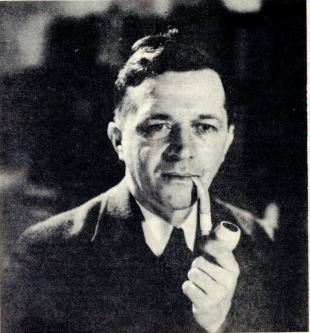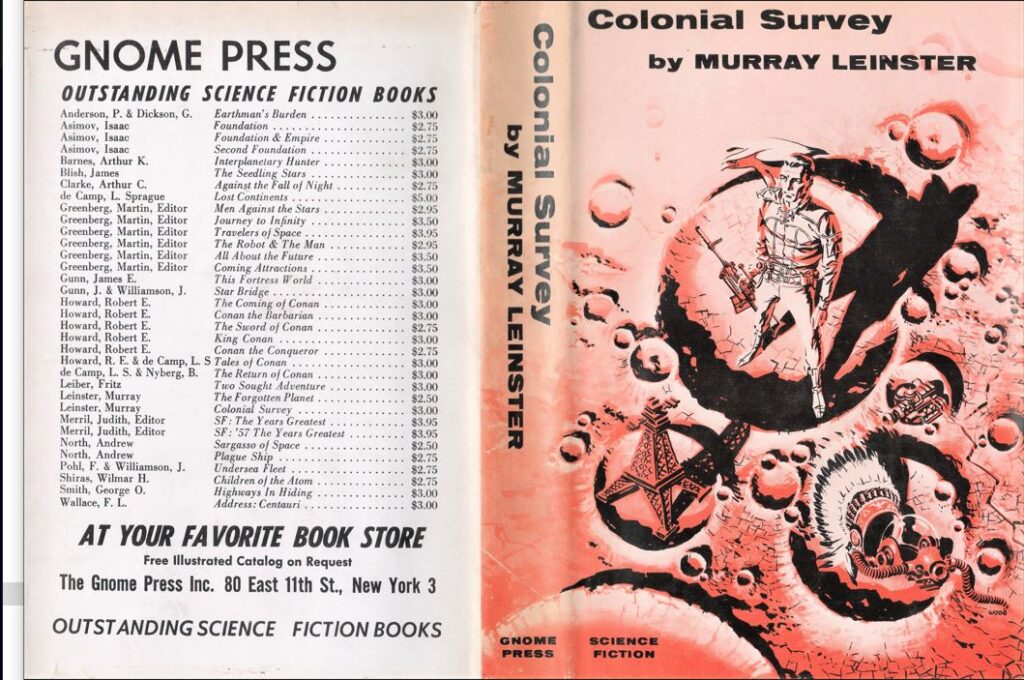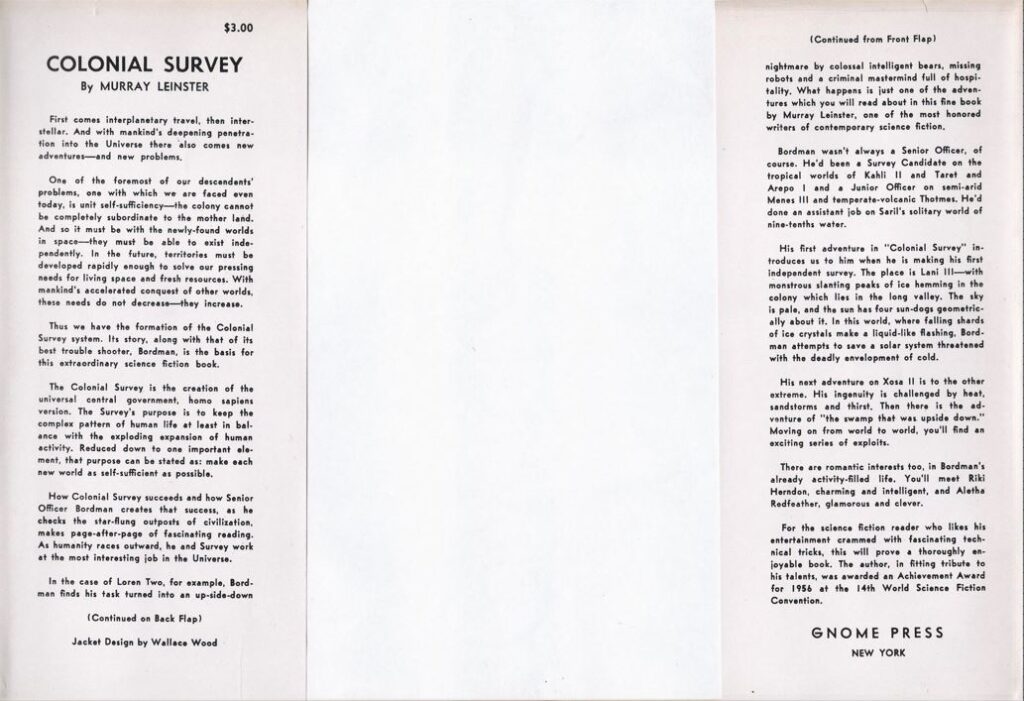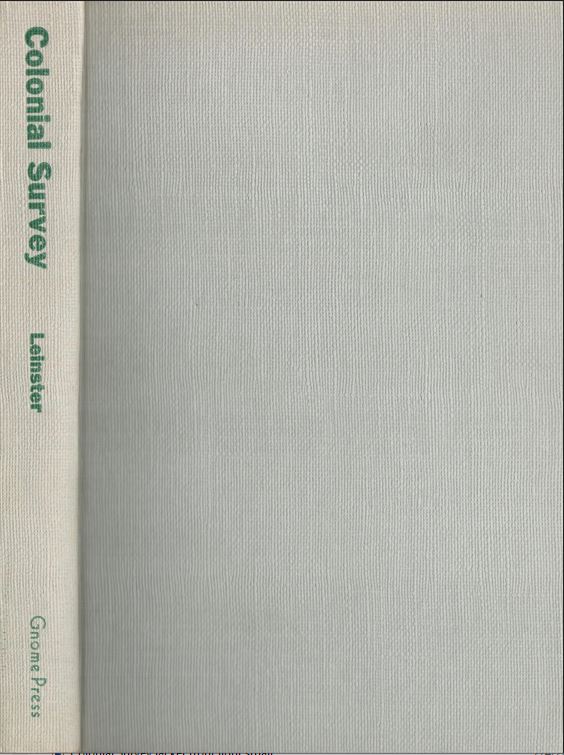Comments
In its May 30, 1949, issue, Time magazine said that “Will F. Jenkins, a 27-year veteran, who also writes under the pen name of Murray Leinster, is regarded as the dean of writers in the field.” That would put the start of his f&sf career in 1922. Sorry, Time fact checkers, but that can’t be right. Where to start is a matter of opinion, sorting among weird elements in proto-sf stories but the ISFDB opts for “Atmosphere,” a never-reprinted story from The Argosy, January 26, 1918. Even if you discount that one, he soared to fame with “The Runaway Skyscraper,” a 1919 story and a relic from the briefly merged Argosy and Railroad Man’s Magazine. (Can there be a better title that calls up the world of vintage pulps?) Showing his dazzling speed and diversity, he followed that with “Footprints in the Snow” for All-Story Weekly, “A Thousand Degrees Below Zero” for The Thrill Book, a poem, “My Little Love,” for Saucy Stories (as by William Fitzgerald), and “The Café Without a Name” (as by Rafaele Yborra) for The Parisienne Monthly Magazine, all before the end of 1919. A year and three dozen pieces after “Skyscraper,” he ripped out a page-turner with another great title, “The Purple Hieroglyph,” under his real name of Will F. Jenkins for Snappy Stories. This gave him the rare distinction of being a Hugo winner who wrote for silent movies, because the story was immediately turned into 1920’s The Purple Cipher. Two sound adaptations – 1930’s lost Murder Will Out, and 1939’s Torchy Blaine in Chinatown – were also made, but the latter failed to give him credit, and, presumably, money.
Most of those zillion pulp stories are also lost or forgotten today, with a giant exception made for “Sidewise in Time,” in the June 1934 Astounding. It’s often credited, properly or not, with creating the alternate universe tale, became a huge influence on L. Sprague de Camp’s Gnome novels, and led to the creation of the Sidewise Award for modern stories in the field.
Otherwise, Leinster’s suffered from the paucity of book-length stories. With all that history before this book, Leinster had only a half dozen mystery and sf novels in hardback to his credit, some as by Jenkins. Nevertheless, Leinster continued to regularly publish high-quality hard science fiction and remained a fan favorite. He was awarded the 1956 Hugo Award for Best Novellette for “Exploration Team,” published in Astounding, one of four stories Leinster wrote about the Colonial Survey, all of them collected in this volume. The story was written around a cover painting by Ed Emshwiller that John W. Campbell had already purchased, a common ploy at the time. Very few ever generated award-winning stories though.
I can never let Leinster go without a mention of “A Logic Named Joe” (Astounding Science Fiction, June 1946), containing a description of the then imaginary internet that may be the best prediction in the history of f&sf.
You know the logics setup. You got a logic in your house. It looks like a vision receiver used to, only it’s got keys instead of dials and you punch the keys for what you wanna get. It’s hooked in to the tank, which has the Carson Circuit all fixed up with relays. Say you punch “Station SNAFU” on your logic. Relays in the tank take over an’ whatever vision-program SNAFU is telecastin’ comes on your logic’s screen. Or you punch “Sally Hancock’s Phone” an’ the screen blinks an’ sputters an’ you’re hooked up with the logic in her house an’ if somebody answers you got a vision-phone connection. But besides that, if you punch for the weather forecast or who won today’s race at Hialeah or who was mistress of the White House durin’ Garfield’s administration or what is PDQ and R sellin’ for today, that comes on the screen too. The relays in the tank do it. The tank is a big buildin’ full of all the facts in creation an’ all the recorded telecasts that ever was made—an’ it’s hooked in with all the other tanks all over the country—an’ everything you wanna know or see or hear, you punch for it an’ you get it. Very convenient. Also it does math for you, an’ keeps books, an’ acts as consultin’ chemist, physicist, astronomer, an’ tea-leaf reader, with a “Advice to the Lovelorn” thrown in. The only thing it won’t do is tell you exactly what your wife meant when she said, “Oh, you think so, do you?” in that peculiar kinda voice.
Gnome Notes
The Astounding stories starred four different protagonists. For the book, Leinster revised the stories to give them all the same name, the no-first-name Bordman of “Sand Doom.” Doing so not only connected the separate short stories into a “novel,” but gave the character some growth by depicting him at different times in his career as he rose from Survey Candidate to Senior Colonial Survey Officer.
Kirkus Reviews gave the expected publication date as April 15, 1957.
Reviews
Floyd C. Gale, Galaxy Science Fiction, November 1957
Leinster pulls his miracles out of a hat labeled Deus ex perspiration and makes them completely credible. First rate.
Contents and original publication
-
- “Solar Constant” (Astounding Science Fiction, July 1956, as “Critical Difference”).
- “Sand Doom” (Astounding Science Fiction, December 1955).
- “Combat Team” (Astounding Science Fiction, March 1956, as “Exploration Team”).
- “The Swamp Was Upside Down” (Astounding Science Fiction, September 1956).
Bibliographic Information
Colonial Survey, by Murray Leinster (pseud. of William Fitzgerald Jenkins), 1957, copyright registration 15Apr57, Library of Congress Catalog Card Number 57-7110, title #61, back panel #33, 185 pages, $3.00. 5000 copies printed. Hardback, gray boards, spine lettered in green. Jacket design by Wallace Wood. “FIRST EDITION” on copyright page. Printed in the U.S.A. by H. Wolff, New York. Back panel: 34 titles. Gnome Press address given as 80 East 11th St., New York 3.
Variants
None known.
Images






